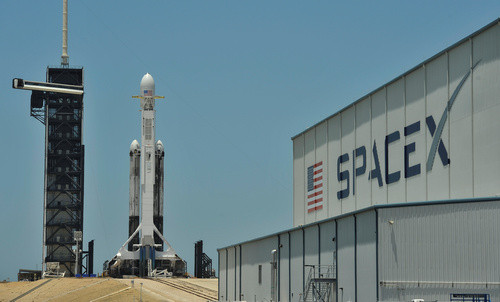On Sept. 28 in Texas, SpaceX CEO Elon Musk will reveal Starship's latest design update and mission plans to get to Mars.
Starship is the crewed space vehicle that will take up to 100 persons to Mars by the decade of the 2030s. It will be hurled towards the Red Planet by its massive first stage booster named Super Heavy. Both are currently under development.
It's been revealed SpaceX is now scouring NASA photos for Martian locations where it can land Starship. SpaceX is considering at least nine landing sites for Starship, according to sources cited by media.
Eight of the nine possible landing sites are located on the border of two major regions called Arcadia Planitia (to the north) and Amazonis Planitia (to the south).
The candidate landing sites are concentrated at low elevations in the northern middle latitudes, in places where there is evidence for shallow ground ice, according to Alfred McEwen, a planetary geologist, and director of the Planetary Image Research Laboratory.
This part of Mars is thought to have massive buried glaciers that remain mostly preserved after millions of years.
Media reports said McEwen later confirmed the existence of SpaceX's landing site-scouting project.
SpaceX is interested in landing sites that are relatively flat, warm, and hazard-free. The candidate landing sites SpaceX wants must also be a place where frozen water might be buried just beneath the surface soil, thereby making it easily accessible to robots and human colonists.
That ice, more specifically water-ice, will be mined, melted, and transformed into water, air, and rocket fuel.
Proof of the hunt for landing sites is the elevation map of Mars discovered by media that shows the nine candidate landing sites for Starship.
The new pictures were taken by HiRISE, a telescope mounted on the Mars Reconnaissance Orbiter (MRO) spacecraft orbiting Mars and operated by the University of Arizona. MRO's camera can photograph surface features at a resolution as small as one foot per pixel.
That's on par with the resolution available on U.S. spy satellites and is three times the resolution Google Maps provides of the Earth.
"Under direction from JPL, the HiRISE team has been imaging candidate landing sites for SpaceX," said McEwen to Business Insider. "This effort began in 2017, initially for the Red Dragon lander, and is continuing for their Starship vehicle."
SpaceX plans to make Starship fully reusable to lower launch costs by a factor of 100 or even more than 1,000. Refueling on Mars is key to attaining interplanetary travel between the Earth and Mars. This is why SpaceX chose methane as its fuel of choice.






